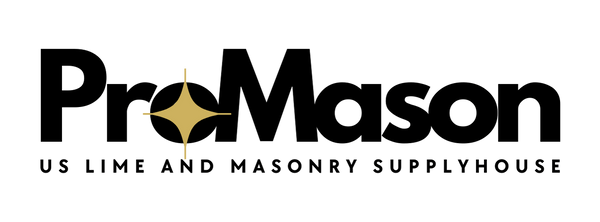Your garage is more than just a place to park your car. It’s a workshop, a storage area, and often the main entrance to your home. A stained, dusty concrete floor can make the whole space feel dirty and unfinished. That’s why a high-quality floor coating is one of the most satisfying upgrades a homeowner can make.
But when you start researching, you’re hit with a wall of confusing choices. Should you use concrete paint? What about an epoxy paint for garage floors? Or a full 2-part epoxy kit? The fear of choosing the wrong product—and ending up with a peeling, stained mess in a few months—is real.
This guide will cut through the noise. We’ll break down the pros and cons of each traditional option and introduce a modern solution that’s changing the game for DIYers.
The Traditional Contenders: A Head-to-Head Comparison
When you look at concrete paint vs. epoxy, you’re generally looking at three distinct categories.
1. Standard Acrylic/Latex Concrete Paint
This is the most basic option available. It’s essentially a thicker version of the paint you’d use on your walls, formulated with a bit more resilience for floor traffic.
- Pros: It’s the most affordable option and the easiest to apply. It rolls on just like regular paint, has low odor, and is available in many colors.
- Cons: The trade-off for that convenience is a major lack of durability. Acrylic paint is prone to peeling, scratching, and staining from oil and chemicals. Most importantly, it cannot withstand “hot tire pickup,” where hot tires soften the paint, causing it to peel off when you drive away. It's a short-term fix at best.
2. 1-Part Epoxy Paint (Epoxy-Acrylic Hybrid)
Often found on the shelf right next to standard paint, this is a common point of confusion. Despite the name, it is not a true epoxy. It’s an acrylic paint infused with a small amount of epoxy resin to improve its hardness.
-
Pros: It’s a step up in durability from basic acrylic paint and offers better stain resistance. Application is still simple—no messy mixing required.
-
Cons: While tougher than latex paint, it’s still vulnerable to peeling and damage, especially from hot tires. It doesn’t provide the rock-solid, chemical-proof shell that people expect when they hear the word “epoxy.”
3. 2-Part Epoxy Kits
This is the traditional champion of durability. It involves mixing a Part A (resin) with a Part B (hardener), which kicks off a chemical reaction that creates an incredibly hard, thick, and resilient surface.
- Pros: Unmatched durability. It forms a seamless, non-porous shield that is highly resistant to chemicals, oil, impact, and abrasion. This is the gold standard for professional workshops and high-traffic commercial spaces.
- Cons: The application process is notoriously difficult for DIYers. You have a limited time to work with the product after mixing (short “pot life”), the fumes are often toxic and require serious ventilation, and the surface preparation is intensive.
The Modern Solution: The Polyurethane Hybrid
For years, DIYers were forced to choose between the ease of paint and the durability of epoxy. Now, a new category has emerged to offer the best of both worlds: the Polyurethane Hybrid Coating.
This advanced, one-component coating uses a bio-polyurethane and bio-emulsion resin system to deliver professional-grade results without the professional-grade hassle2. Think of it as a smart coating. It's formulated with proprietary plant oil emulsions that allow various toxin-free resins and performance additives to be blended and cross-linked. The result is a finish that solves the core problems of the older technologies.
Here’s how it stacks up:
Epoxy-Level Durability: It’s a hard-wearing coating specifically formulated for outstanding abrasion resistance and protection from hot tire pickup, moisture, and chemicals
Paint-Like Simplicity: It’s a one-component, self-sealing product. There’s no complex mixing—you just open the can and roll it on. Cleanup is equally simple, requiring only soap and water.
Superior Resilience: While traditional epoxy can become brittle and crack, this hybrid chemistry is designed to be uniquely hard yet resilient, providing superior resistance to cracking or peeling.
Safe & Low-Odor: With a VOC content of zero grams per liter, it’s a non-toxic formula that’s far more pleasant and safe to use in an enclosed space like a garage or basement.
The Final Verdict: Which is Right for You?
|
Feature |
Acrylic Paint |
1-Part Epoxy Paint |
2-Part Epoxy Kit |
Polyurethane Hybrid |
|
Durability |
Low |
Medium |
Very High |
Very High |
|
Ease of Use |
Very Easy |
Very Easy |
Difficult |
Easy |
|
Hot Tire Resistance |
No |
Low |
High |
High |
|
Odor / VOCs |
Low |
Low-Medium |
High |
Zero |
|
Best For |
Light foot traffic, low-use areas |
Modest upgrade over paint |
Professional shops, max durability |
The savvy DIYer wanting pro results |
While 2-part epoxy will always have a place in heavy industrial settings, the choice for the modern homeowner in 2025 is clear. You no longer have to compromise. Advanced polyurethane hybrids offer the durability you need without the difficult application and hazardous fumes you don’t.
Now that you’re armed with the facts, you can choose the right coating for your project with confidence. Explore a product like Pro Mason Concrete Paint to see if a polyurethane hybrid is the perfect fit for your garage floor transformation.

